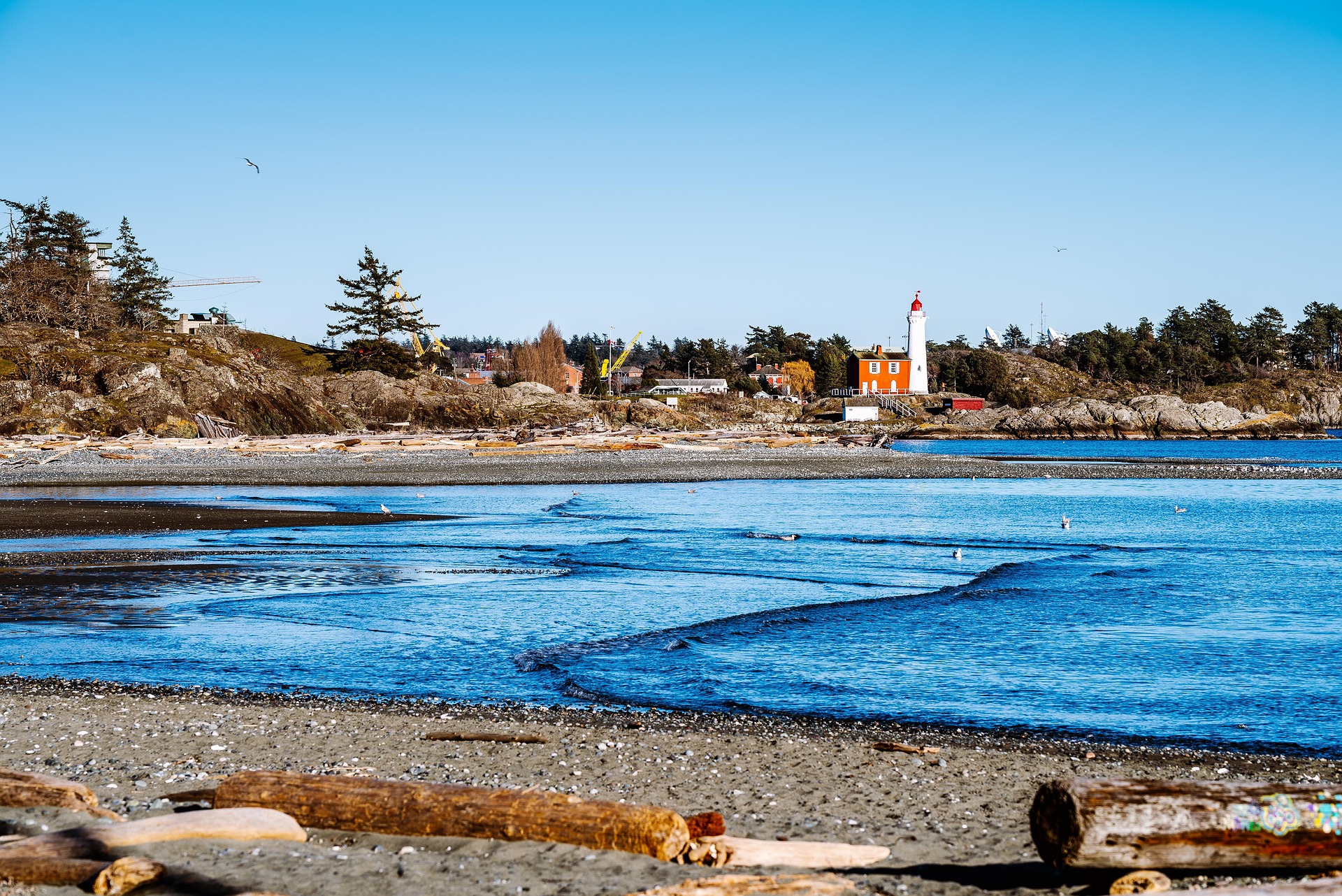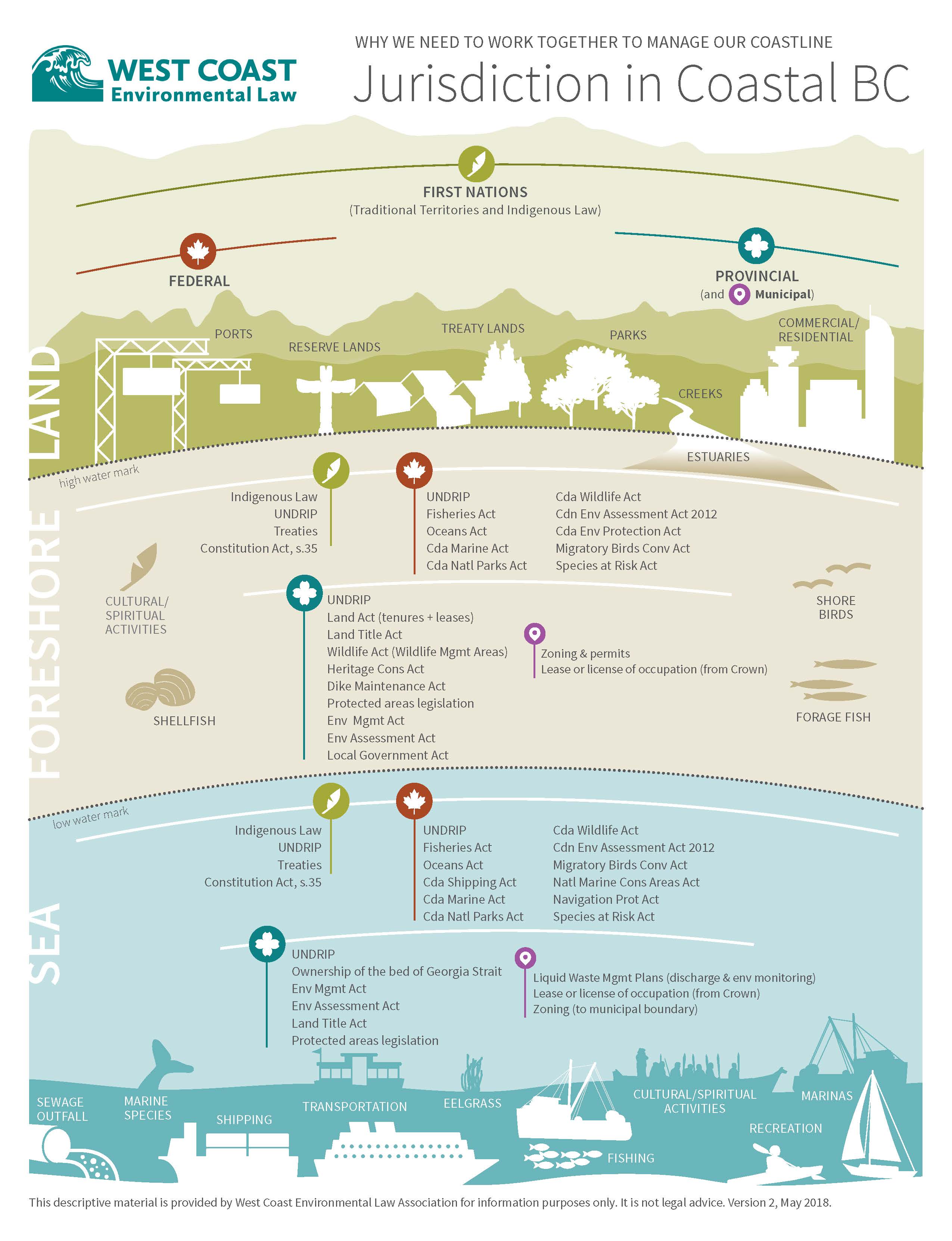
The Government of BC just released its first Coastal Marine Strategy, setting a new and promising course for the BC coast. Implementation of the new Strategy will be co-managed by the Province and First Nations to effectively conserve and manage coastal regions over the long-term in coordination with federal, and local governments. This collaborative, unified approach is a major evolution from the current way of managing coastal issues in a disjointed manner without full respect for Indigenous governance.
In the new Strategy, the Government of BC commits to many measures to improve coastal management, including by advancing Indigenous self-determination. The Strategy includes activities to protect and restore coastal ecosystems, assess and manage cumulative impacts, promote sustainable blue economies, and support the implementation of marine plans to ensure the most sustainable use of coastal regions.
What does this mean in practice? It means that BC is taking its responsibility to care for the coast seriously, and is committed to fixing the problems stemming from the fragmented way the Province has been managing coastal issues – such as the response to a devastating diesel spill in Haida Gwaii, the decimation of wetland habitat in Burrard Inlet due to cumulative impacts of human development, and subpar planning for sea level rise. It means that BC is putting a framework in place to proactively manage the coast for generations to come.
How we got here
Indigenous nations have inherent jurisdiction to their territories and coastal Nations have been upholding their responsibilities to govern and care for the coast since time out of mind. The Canadian Constitution divides up jurisdictional responsibility over coastal and marine governance between the federal and provincial Crown governments, which has contributed to the fragmented management that we see in BC, while recognizing existing aboriginal and treaty rights.

The Government of BC has long governed the coast through a patchwork of regulations and laws overseen by different ministries and departments – with no overarching vision for management decisions. And until now, it was one of the only coastal jurisdictions in North America without a comprehensive plan to protect it. This siloed approach, which is all too common in environmental management, has led to inefficiencies and left coastal communities and ecosystems vulnerable to pressures from coastal development, climate change, and growing demands for coastal resources.
In 2020, after ongoing advocacy from First Nations and BC residents, the Province committed to developing a coastal marine strategy in recognition of the need for better management of coastal areas. In 2022, the Province formed the new Ministry of Water, Land and Resource Stewardship with accountability for coastal issues in BC, including leading the development of the Strategy.
The Government of BC has worked in collaboration with First Nations to ensure that the Strategy is strong enough to address the mounting challenges facing coastal and marine areas. In 2022, the Province released a co-developed Policy Intentions Paper for public consultation and received feedback from nearly 1,000 BC residents. Key concerns identified through consultations were summarized in a What We Heard Report, and informed the creation of the Coastal Marine Strategy.
About the Coastal Marine Strategy: a Blueprint for the Coast
The BC Coastal Marine Strategy outlines four themes: healthy coastal marine ecosystems, resilience to climate change, thriving coastal economies and communities, and informed governance. Under these themes are nine goals and 24 supporting actions to achieve its vision for “a diverse, productive, and resilient coastal marine environment that is valued in its own right and that supports the prosperity, health and well-being of coastal communities now and into the future.”
The Strategy concentrates on activities, uses and values regulated by the Province in areas closer to shore, while recognizing the need for strong collaboration with Indigenous, federal and local governments, with whom they share responsibilities.
For the next 20 years, the BC Coastal Marine Strategy will serve as a “blueprint for the coast” to guide provincial actions on planning and decision-making. Once implemented, the policies, programs and projects in the Strategy will help governments to improve the health and stewardship of coastal marine environments, foster resilience to climate change, promote a sustainable ocean economy, and advance reconciliation with First Nations.
Some of the Strategy’s actions are new, such as commitments to:
- Protect and manage coastal habitat through several new initiatives;
- Report on conservation outcomes, to ensure transparency and accountability;
- Improve marine tenuring to better address marine pollution;
- Develop a new framework for marine incident preparedness, response and recovery for the south coast of BC;
- Identify post-spill environmental monitoring and clean-up standards;
- Improve understanding of climate change risks to coastal communities, ecosystems and economies; and
- Better understand and implement nature-based solutions to addressing climate impacts to shorelines.
Other actions expand on existing initiatives that align with the Strategy’s goals to improve the management and protection of marine and coastal areas. For example, there are several actions outlined in the strategy that aim to support the implementation of the marine plans that were developed through the Marine Plan Partnership (MaPP), and the creation of the world’s largest Indigenous-led network of marine protected areas in the Great Bear Sea.
BC Coastal Marine Strategy themes, goals and actions / Government of BC
The Strategy sets the stage for what's to come
Immense work went into getting to this point. But in some ways, this is just the beginning: the Strategy sets out 24 actions which now must be implemented.
This implementation must align with the United Nations Declaration on the Rights of Indigenous Peoples (UNDRIP), which the Province committed to upholding when it enacted the Declaration on the Rights of Indigenous Peoples Act in 2019. UNDRIP affirms the rights of Indigenous Peoples, including the right to self-govern and to full and informed decision-making over their territories.
In a Strategy that guides a suite of coastal management decisions, ensuring that these decisions are made with First Nations – in accordance with their inherent rights to self-govern – is crucial. The Strategy commits the Province to exploring innovative protected area models, including Indigenous Protected and Conserved Areas (IPCAs), as well as developing monitoring and enforcement programs, which should include Indigenous Guardians.
We have called for this Strategy to be enshrined in law. This will be a critical next step to ensure that the Strategy is resistant to the winds of political change and is able to fulfil its 20-year vision. The Strategy commits the Province to developing a proposal for coastal marine legislation, in partnership with First Nations, and we will continue to work to ensure this happens. Strong laws are critical to long-lasting environmental protection.
Lastly, the Strategy’s actions must be supported by sufficient funding.
The newly released BC Coastal Marine Strategy ushers in a new era of collaborative and sustainable management of the coast. It has the potential to put into practice the Province’s commitment to reconciliation with Indigenous peoples, and to follow their lead in proactively, adaptively and sustainably stewarding these coastal lands and waters.
We congratulate all those who worked to make this a reality and look forward to implementing the bold vision embodied by the Strategy – for the next 20 years and beyond.
Photo: Vlad Vasnetsov via Pixabay